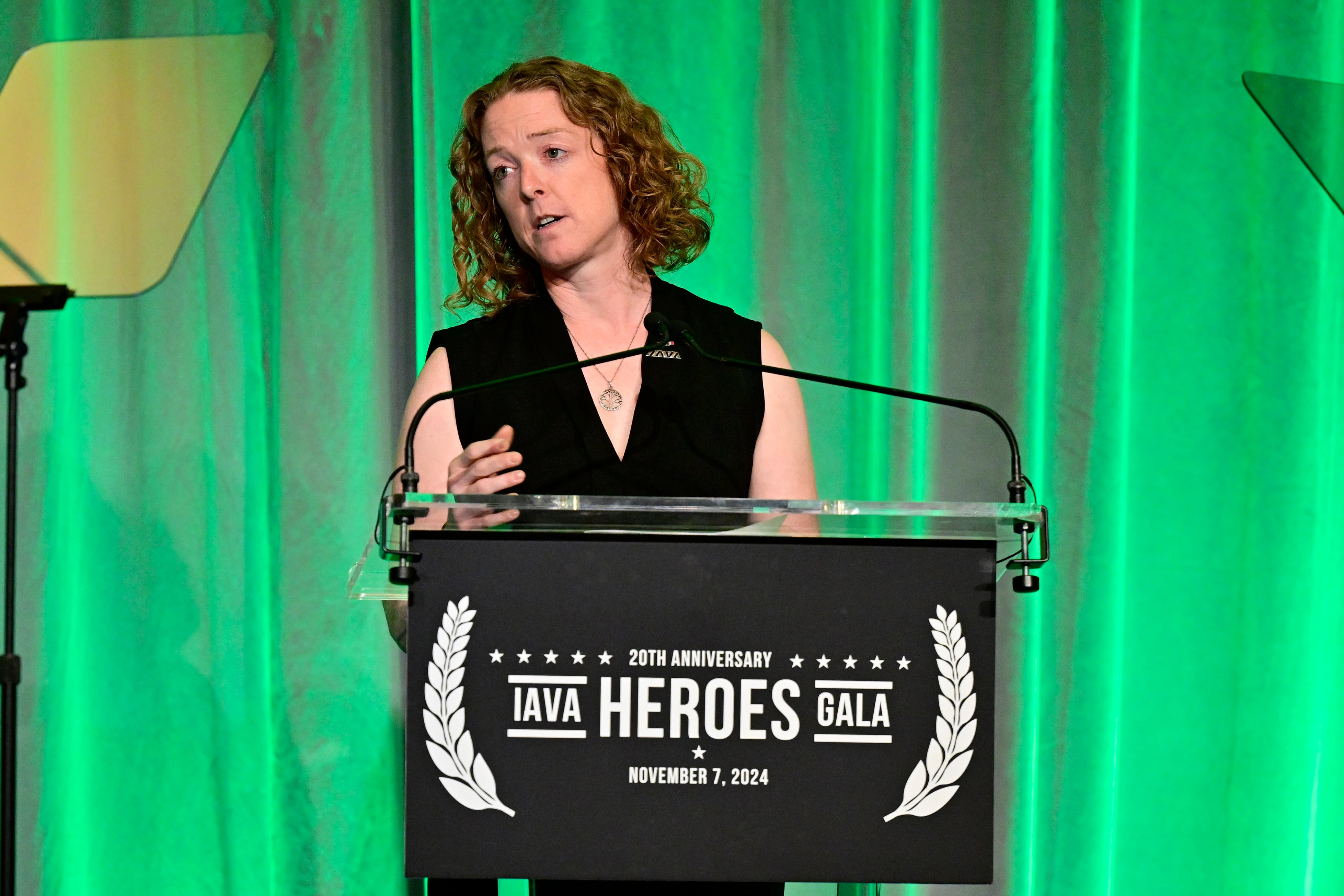The high operational tempo continues to tear at the fabric of many military families' lives despite the drawdowns from Iraq and Afghanistan, according to a new report based on a survey of active-duty service members, veterans and spouses.
Service members and spouses are increasingly more concerned about quality-of-life issues such as family stability, and the impact of deployments on children, according to the 2016 Blue Star Families Military Family Lifestyle Survey, which was released Tuesday. More than 7 in 10 respondents said the op tempo resulted in unhealthy stress levels, and half said the Defense Department's programs to help children deal with parents on deployment aren't up to the task.
However, there is less worry about the changes in retirement benefits, as details that emerged over the last year about the new plan include allowing those now on active duty to remain in the current system.
"I’m not surprised military families and service members are feeling weary and overstretched. The operational tempo has not returned to the pre-9/11 level that most of America thinks it has," said Cristin Orr Shiffer, senior adviser for policy and survey for Blue Star Families as well as a lead author of the report on the survey. "I’m surprised about the way that it is manifesting itself in quality-of-life issues."
The group's seventh annual online survey was fielded in late April and throughout May; 8,390 people responded.
The survey results indicated that extended family separations, frequent moves and outdated expectations of military spouses were the most prevalent issues that substantially reduce the quality of life and attractiveness of military service. There is still some expectation that supporting their service member’s military career should take priority over military spouses’ personal, professional and family priorities.
The report's authors noted that the all-volunteer force wasn't designed for the modern service member, who is better educated, married with children, and living in an increasingly diverse and inclusive society. Nor was it designed for the current environment of long, low-level conflict.
"The way DoD expects military families to operate is not particularly aligned with reality right now," Shiffer said. "DoD has a very traditional understanding of military families."
Thus, DoD must do a better job of incorporating military families into its current thinking and future planning, the report states. "Rather than ad hoc measures meant to provide support during periods of acute warfare, military families must be understood as a structural component of the force."
Among those surveyed:
- 72 percent feel the current operational tempo imposes an unacceptable level of stress for a healthy work and family life; and 42 percent said they experienced more than six months of family separation in the last 18 months.
- Nearly half of the service members and troops surveyed have a parent who served. A similar number, 43 percent, would recommend service to their own child, though 66 percent would recommend it to another young person. Just 19 percent said they would recommend military service if the current trend of cutting benefits continues.
- 76 percent of families don't feel their service member's salary is keeping pace with inflation; 79 percent don't feel military compensation is keeping up with civilian pay.
- 51 percent of families identified spouse unemployment/underemployment as a top obstacle to financial security, while 63 percent of spouses said they haven't experienced a work promotion since marrying their active-duty spouse.
- 66 percent of families can’t get reliable child care, and 83 percent of spouses said lack of child care has affected their ability to pursue employment or education.
- 90 percent of those in the LGBT community who responded were comfortable using on-base services such as the commissary, exchange and MWR and family readiness activities, but 38 percent of LGBT respondents felt that Tricare policies and familiarity regarding LGBT health care needs were inadequate.
- 79 percent of active-duty families indicate they plan to transfer the GI Bill to their spouse or child
One surprise this year, Shiffer said, was that active-duty members ranked "impact of deployments on kids" as one of their top five issues, for the first time since 2014, when analysts began ranking issues by subgroups such as active duty, spouses and veterans. This has been consistently an issue for spouses; it ranked fourth this year for both spouses (37 percent) and active-duty members (32 percent).
Also ranking among the top concerns are changes to retirement benefits, and military spouse employment. Of the active duty spouses who responded, 21 percent reported they were unemployed and actively seeking work. This is consistent with DoD's 2015 survey of spouses, which found a 23 percent unemployment rate.
The report recommends that military leaders continue to prioritize military family programs as an essential part of readiness while operational tempo remains high, and that those leaders should seek regular feedback from all ranks to understand the experience and concerns of service members and their families.
DoD is committed to supporting quality of life programs for service members and families, according to a statement provided by Todd Weiler, assistant secretary of defense for manpower and reserve affairs. He cited recent programs to increase opportunities for spouse employment, expanded paternity and maternity leave, broadened access to education and licensure programs.
The nonprofit Blue Star Families began conducting the survey in 2009 as a window into the experiences and challenges of military families. This year's survey was designed by the nonprofit, working with Syracuse University's Institute for Veterans and Military Families. Of the 8,390 responses, 42 percent were active-duty spouses, 12 percent were active duty service members, 19 percent were veterans and 13 percent were spouses of veterans.
The two organizations worked with other national military and veteran service organizations to distribute the survey, meaning it was not a random sampling of the military and veteran communities. That's shown in the demographics of those who responded, which tend toward older and higher-ranking service members, either still in service or at the time they left the military.
Karen Jowers covers military families, quality of life and consumer issues for Military Times. She can be reached at kjowers@militarytimes.com .
Karen has covered military families, quality of life and consumer issues for Military Times for more than 30 years, and is co-author of a chapter on media coverage of military families in the book "A Battle Plan for Supporting Military Families." She previously worked for newspapers in Guam, Norfolk, Jacksonville, Fla., and Athens, Ga.





